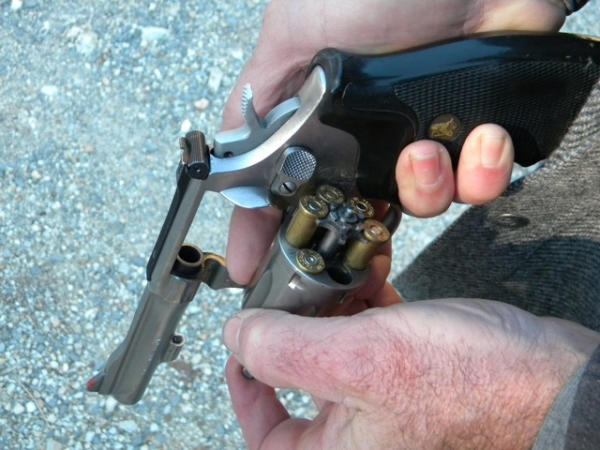
I’ve talked about the fundamentals of defense many times: move, communicate and use cover, shooting if necessary and thinking. The issue people have is connecting these same principles to their unarmed response. I carry my handguns all the time – except where I can’t. Even though I may not have a firearm my threat-response is going to be the same.
Moving should be your immediate response to danger. You’re walking in the park and come across a snake upset, rattlin’ and ready to bite. You respond by moving beyond its striking range. When face with a person exhibiting dangerous body language your response should be to move. You move to create distance. Moving forces the threat to react to your actions, buying you a second or maybe even more response time to figure out what to do next. You move off line of their attack and try to be a moving target. It doesn’t matter whether they are trying to hit, cut or shoot you it’s better to be moving. You move to get to cover and the protection it offers. Moving applies whether you’re armed or unarmed.
Communicating is key. Issuing verbal commands to the threat(s) may change their mind about what they thought they were going to do. You’ll need to communicate with your family or friends, telling them what to do or where to go. It might be helpful to communicate with yourself, talking your way thorough solving the problem at hand. Eventually law enforcement is going to show up, and they’ll want to communicate with you. You may have your firearm, or maybe not. Communication is still mandatory.
Using cover, taking advantage of the protection it provides is critical for everyone. Covers protects you from the threat. He’s trying to hit you. You position a car between you and him, moving constantly in response to his movement to flank you. The car offers protection. The same is true if the threat is armed with an impact or edged weapon. When the threat has a firearm cover needs to stop incoming fire. When danger erupts don’t just stand there frozen in place. Move to cover.
You shoot if it’s required. By moving, communicating and issuing commands may change the threat(s)’s mind about attacking. You’re not the victim they thought; they leave or retreat. If you’re not carrying a firearm shooting may be difficult. But remember, unarmed is a state of mind. There are always objects surrounding you that can be used for weapons. Hit them with a brick. Throw a chair. Use a fire extinguisher against them. Almost anything you pick up can be used as a weapon.
Thinking is always required. If all you’re doing is reacting to what’s being done to you then you’re operating with the reptilian part of the brain. Logical thought – necessary to solve your problem –only occurs in the conscious mind. You must remain calm and steady in order to think logically. This is true regardless of the physical weapons you are using.
The exam you’ll face is pass or fail – life or death – and it’s not graded on a curve. The only acceptable option is to win. Just remember that winning doesn’t always mean physically confronting the threat. The best option is to avoid or escape the danger. Study and practice the fundamentals. Move, communicate, use cover – respond with force if necessary – and always be thinking.
Tiger McKee is director of Shootrite Firearms Academy, located in northern Alabama. He is the author of “The Book of Two Guns” - http://shootrite.org/book/book.html writes for several firearms/tactical publications, and is featured on GunTalk’s DVD, “Fighting With The 1911 - http://shootrite.org/dvd/dvd.html McKee’s new book, AR-15 Skills and Drills, is available off Shootrite’s website: http://shootrite.org/AR15SkillsBook/AR15SkillsBook.html